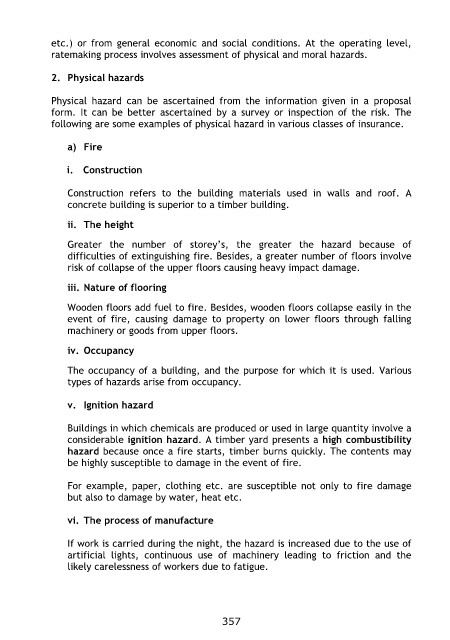Page 363 - IC38 GENERAL INSURANCE
P. 363
etc.) or from general economic and social conditions. At the operating level,
ratemaking process involves assessment of physical and moral hazards.
2. Physical hazards
Physical hazard can be ascertained from the information given in a proposal
form. It can be better ascertained by a survey or inspection of the risk. The
following are some examples of physical hazard in various classes of insurance.
a) Fire
i. Construction
Construction refers to the building materials used in walls and roof. A
concrete building is superior to a timber building.
ii. The height
Greater the number of storey‟s, the greater the hazard because of
difficulties of extinguishing fire. Besides, a greater number of floors involve
risk of collapse of the upper floors causing heavy impact damage.
iii. Nature of flooring
Wooden floors add fuel to fire. Besides, wooden floors collapse easily in the
event of fire, causing damage to property on lower floors through falling
machinery or goods from upper floors.
iv. Occupancy
The occupancy of a building, and the purpose for which it is used. Various
types of hazards arise from occupancy.
v. Ignition hazard
Buildings in which chemicals are produced or used in large quantity involve a
considerable ignition hazard. A timber yard presents a high combustibility
hazard because once a fire starts, timber burns quickly. The contents may
be highly susceptible to damage in the event of fire.
For example, paper, clothing etc. are susceptible not only to fire damage
but also to damage by water, heat etc.
vi. The process of manufacture
If work is carried during the night, the hazard is increased due to the use of
artificial lights, continuous use of machinery leading to friction and the
likely carelessness of workers due to fatigue.
357

